Issue Archive
Table of Contents
EDITORIAL
Introduction to a How I Treat series on major complications after allogeneic stem cell transplantation
In this commissioned series introduced by Associate Editor Robert Zeiser, experts contribute seminal discussions of the 3 major pitfalls following allogeneic stem cell transplantation. Through exploration of instructive real-world cases, they provide up-to-date personal recommendations for solving these common problems.
BLOOD COMMENTARIES
HOW I TREAT SERIES
Major Complications After Allogeneic Stem Cell Transplantation
CLINICAL TRIALS AND OBSERVATIONS
Feasibility and efficacy of CD19-targeted CAR T cells with concurrent ibrutinib for CLL after ibrutinib failure
Clinical Trials & Observations
Gauthier and colleagues evaluated concomitant ibrutinib and anti-CD19 chimeric antigen receptor (CAR) T-cell therapy in a study of patients with chronic lymphocytic leukemia (CLL) refractory to ibrutinib monotherapy. Their data indicate a low rate of cytokine release syndrome and high rates of minimal residual disease–negative responses.
HEMATOPOIESIS AND STEM CELLS
A human SIRPA knock-in xenograft mouse model to study human hematopoietic and cancer stem cells
Jinnouchi and colleagues describe their generation of a highly efficient new immunocompromised mouse model for the study of human hematopoietic stem cells, leukemias, and solid tumors by humanizing the locus for the ligand of CD47 and thereby reducing phagocytosis of transplanted human cells.
LYMPHOID NEOPLASIA
Increased mTOR activation in idiopathic multicentric Castleman disease
Arenas and colleagues report that patients with idiopathic multicentric Castleman disease display heightened activation of the mTOR signaling pathway, suggesting a much-needed new treatment strategy for this rare but highly problematic disease.
Targeting cytokine- and therapy-induced PIM1 activation in preclinical models of T-cell acute lymphoblastic leukemia and lymphoma
MYELOID NEOPLASIA
Persistent leukocytosis in polycythemia vera is associated with disease evolution but not thrombosis
Clinical Trials & Observations
To address whether there is an association between leukocytosis and thrombosis or disease progression in polycythemia vera, Ronner and colleagues used specialized modeling and identified a strong link between persistent leukocytosis and disease evolution, but not thrombosis.
THROMBOSIS AND HEMOSTASIS
A high-fat diet delays plasmin generation in a thrombomodulin-dependent manner in mice
Exactly how obesity predisposes to thrombosis remains unresolved. Applying their novel assay to measure plasmin generation, Miszta and colleagues revealed that a high-fat diet alters the balance between generation of thrombin and plasmin in mice, providing clues for future investigations in humans with obesity.
BLOOD WORK
ERRATUM
-
Cover Image
Cover Image
![issue cover]()
Section of colonic mucosa showing apoptotic cells in crypts and intense inflammatory infiltrate surrounding the crypts, characteristic of severe acute graft-versus-host disease (hematoxylin and eosin stain). See the How I Treat series on major complications after allogeneic stem cell transplantation in this issue.
- PDF Icon Front MatterFront Matter
- PDF Icon Table of ContentsTable of Contents
- PDF Icon Back MatterBack Matter
- PDF Icon Editorial BoardEditorial Board
Advertisement intended for health care professionals
Email alerts
Advertisement intended for health care professionals


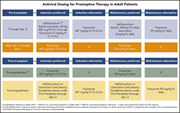
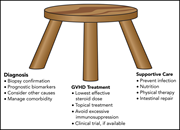

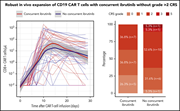
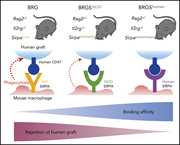
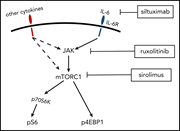


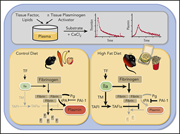

CAR-T and ibrutinib vs CLL: sequential or simultaneous?